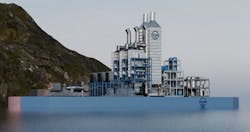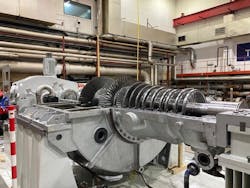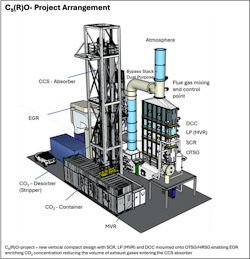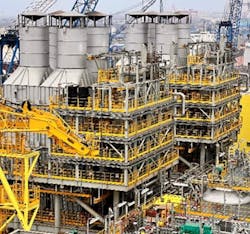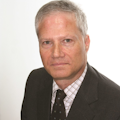Combined cycle power equipment evolving for fixed and floating platforms
By Jeremy Beckman, Editor, Europe
Norway has pioneered the transmission of power from shore as a cleaner source of energy for platforms than gas turbines. Various new initiatives are now under way to produce electricity on or alongside offshore installations with lower CO2 emissions – all involving the use of combined cycle power technology developed by Techouse.
The Stavanger-based company has a long track record of devising and supplying energy recovery and water treatment systems for the offshore oil and gas sector, customizing the design of its equipment in terms of weight and footprint to suit the constraints of the offshore facility. According to Chief Technology Officer Pål Kloster, some of the company’s staff supported the first three combined cycle heat and power installations in the North Sea around the turn of the millennium.
Techouse’s waste heat recovery units are designed to extract heat from gas turbines or diesel engines, using it to heat up a liquid medium such as water or thermal oils to supply energy to other processes on the offshore installation. Alternatively, heat recovered from a gas turbine exhaust can be used to create pressurized steam in the company’s heat recovery steam generators (HRSGs) and once through steam generators (OTSGs). The process produces extra power in steam turbines that can be combined to also cover heat requirements. Main benefits are said to be improvements in both energy efficiency and flexibility of the energy system.
In the Norwegian North Sea, Equinor and its partners are replacing one gas turbine on the Statfjord C fixed platform with a new combined cycle power system designed by Techouse. This is the company’s first experience of a retrofit to an existing platform, all its previous combined cycle installations offshore having been for new development projects. Stavanger-based Moreld Apply is managing the program’s overall execution, including interfaces on the platform and associated modifications to existing systems.
The schedule is on track with the gas turbine removed and a new steam turbine due to be installed this summer, which will recover surplus heat from two gas turbine-driven compressors. It will also be the first application of a new steam turbine/combined cycle solution on a mature field on the Norwegian continental shelf for heat recovery. Techouse was not involved in evaluations of combined cycle versus other solutions, Kloster said, but did participate in the initial studies and eventually won the contract following a bidding procedure. “Our understanding is that installing combined cycle was the most profitable way of cutting CO2 emissions on the platform.”
The steam turbine, a sub-supply to Techouse from Howden Turbo UK, will produce 15 MW of electricity from steam generated in two Once Through Steam Generators (OTSGs) mounted on two LM2500 compressor drives. The Techouse-supplied OTSGs and condensers, weighing around 110 metric tons per unit, 220 tons in total, will be installed next summer, along with a condensate polisher skid, condensate pumps, feed water pumps and make-up water skid piping, valves and instrumentation. Start-up of the new combined cycle power system should follow during the fall of 2026 – the exact timing depending on the duration of any planned maintenance shutdown.
Equinor expects the new equipment to cut emissions on Statford C by 95,000 metric tons annually. The investment forms part of the Statfjord partners’ FLX Future Energy project, which also involves electrification of water injection and reducing emissions from other processes on the platform. Elsewhere, construction is nearing completion of the MODEC-designed FPSO for Equinor’s Bacalhau field development in the pre-salt Santos basin offshore Brazil. This too will feature combined cycle equipment. “Combined cycle is one of their solutions for cutting CO2 emissions,” Kloster said, “and seem to us to be under evaluation on all their offshore developments.”
Downsizing steam generators
Another ongoing collaboration with Equinor, alongside TotalEnergies, a third undisclosed oil company and Norwegian research organization SINTEF Energy, is pursuing a once-through steam generator of reduced weight and size for gas turbine combined cycle solutions. This could enable wider implementation on fixed and floating offshore installations. The joint industry project is supported by the Norwegian Research Council.
In the combined cycle process, heat from a gas turbine’s exhaust is used to produce superheated steam that can be harnessed by a steam turbine to increase power output by up to 33%. Alternatively, power can be delivered with a reduction of up to 25% in fuel consumption compared with a conventional offshore set-up where the gas turbines are used solely for power and heating. However, the beneficial impact of OTSGs is at present restricted by the weight and size of the heat recovery equipment that generates steam from the exhaust. So the JIP is looking to develop an OSTG with a weight reduction of up to 50% and a footprint up to 15% smaller. This could make combined cycle power plants a more attractive option on fixed installations in particular, where added weight can be more critical.
“SINTEF had previously studied a low weight concept for OTSGs/HRSGs over an extensive period,” Kloster explained. “The concept is based on a design well outside any existing standards, hence testing and demonstration was needed to prove operational feasibility. Techouse was approached as a commercial company that could design all details around such a basic design and was asked to lead the project. Equinor, TotalEnergies and other oil companies see lightweight OTSGs as an enabler for combined cycle power in general, including existing installations. The main elements in the solution under investigation are small diameter tubes and a hot casing design.” SINTEF is undertaking analyses of compact steam bottoming cycles and providing input to the lighter weight OTSG design. Performance, fatigue and vibration tests are due to take place during the fall on the prototype.
“The OTSG is designed to be placed in the exhaust of a 5-MW gas turbine and is in length and height identical to a design for a 20+ MW gas turbine, but narrower to match the smaller gas turbine in the test. The OTSG will go through several hundred start/stops at various loads to simulate typical transients expected over the (economic) life expectancy for an installation. Key elements are thermal performance, vibration control and thermal fatigue.
“At present, no platform has been identified for an offshore trial. However, the required shut down for a retrofit installation of the OTSG is expected to be unaltered. The real enabler is the light weight of the OTSGs, which will make it more feasible to place them on installations with low weight contingencies.” Following a successful implementation, Techouse will look to offer smaller-size OSTGs and HRSGs as standard in future for both fixed and floating installations. “But opinions among our clients differ widely, so we expect to see both new and old solutions adopted in future.”
Floating power collaboration
More recently, the company agreed to join a collaborative program led by Ocean-Power to develop a floating gas power plant with CO2 capture capability. Others onboard include SBM Offshore, Veri Energy, CapeOmega and Miljostiftelsen Bellona, with Equinor and TotalEnergies and various utilities interested in testing the environmental benefits. The planned floating power hubs would supply electricity to offshore oil and gas platforms more cost-efficiently than importing power from shore via long-distance subsea cables, with surplus power available for delivery to local grids. This would also reduce the platforms’ carbon emissions. The electricity for the 200-250 MW power packs would be generated by Techouse’s combined cycle power systems. CO2 captured from the systems’ exhausts would be injected either nearby into a subsurface formation, into a pipeline, or liquefied and then transported on a vessel to another location for alternative uses or for permanent storage.
The collaboration has started, with Techouse already providing results from its R&D for the concept. “At present we are in the pre-FEED stage: generic studies of increasing details are ongoing, with a couple of actual offshore locations under review. The concept is valid for both at-shore and offshore locations in harsh environments.” The study locations are on the Norwegian continental shelf, although the concept would be valid more widely. Ocean-Power is initially looking to gain a contract to build one or more power hubs, with externally sourced gas used to produce electricity with carbon capture at the designated installation site.
Kloster, summing up the various developments, said: “Techouse offers combined cycle power plants offshore with extraction for process heat for installations with varying heat and power requirements. For oil and gas installations the challenge is larger than for floating power plants since the oil and gas installations have varying loads, and focus on oil and gas production. A steam cycle in a combined power plant is secondary in practice – hence the operators are initially sceptical due to operational uncertainties and experience. But over time this will go away as experience grows. On a power barge, the power is the main product and will be more stable in operation, and will therefore have the operator’s full attention.”
About the Author
Jeremy Beckman
Editor, Europe
Jeremy Beckman has been Editor Europe, Offshore since 1992. Prior to joining Offshore he was a freelance journalist for eight years, working for a variety of electronics, computing and scientific journals in the UK. He regularly writes news columns on trends and events both in the NW Europe offshore region and globally. He also writes features on developments and technology in exploration and production.
